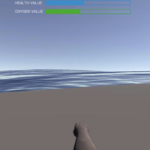Shuo Li et al.
Researcher has been trying to optimize the method for evaluating presence in virtual reality (VR) to address variability and uncertainty in quick evaluations using questionnaires. We recommend using the Technique for Order Performance by Similarity to Ideal Solution (TOPSIS) model to calculate the iGroup Presence Questionnaire to measure users’ overall presence in VR prototyping, instead of the weighted sum approach. The effects of two presence factors (scene density and motion trajectory technology) on a self-developed VR swimming virtual system were tested using the TOPSIS model with 20 participants each 12 tasks in a user experiment. The results were compared using two different weighting methods, fuzzy hierarchical analysis and uniform weighting methods. TOPSIS had a narrower range of data within the 95% confidence interval and a significantly lower coefficient of variation (CV). This indicates enhanced precision in evaluating presence and can be used to compare different technique setting of virtual systems.
